#36 Packard Roadster
Text
Rollin Out to Lone Star Round Up 2023. Zephyr, Chevy, Packard, Ford, Mercury. Los CoChinos CC.
#classic car#vintage cars#custom car#antique car#kustom#los cochinos cc#praise the lowered#kustom kulture#loscochinos#taildragger#39 zephyr coupe#39zephyr#36 ford 5 window#36 packard roadster#50 chevy#39 mercury coupe#lonestarroundup#lone star round up#lsru2023#zephyr#Mercury#Packard#ford#Chevy#south austin#austin texas#austin tx#texas#Austin
64 notes
·
View notes
Video
vimeo
2019 Monterey Motor Week from arthur von wiesenberger on Vimeo.
Monterey Motor Week is known for a number of things especially the Pebble Beach Concours d’Elegance. But other events also make the week exceptional including the Tour d’elegance , a morning journey that went from Pebble Beach to Carmel-by-the-Sea and back. Along the way fans lined the streets as they witnesses and heard this rolling museum of spectacular machines.
Behind the scenes the cars are polished up after the cruise. A rare Chrysler Le Baron Thunderbolt, belonging to an owner from Denver Colorado is one of only five.
A Ford GT 40 is the only aluminum body made. It currently lives in Indiana.
There was a rare 1913 blue Bugatti
A 1935 Packard 1204 Super 8 Coupe Roadster had a 150 horsepower L-Head straight eight engine. This streamlined Packard was styled by Count Alexis de Sakhnoffsky. This car is one of 11 known to survive - and one of three to have a rear mounted spare wheel.
Auctions are also a big part of Motor Week. Some of the most exciting and rarest cars were sold by Gooding & Company.
This 2005 Ferrari 575 Superamerica realized a price of $240,800
A 2018 Ferrari GTC4 Lusso 70th anniversary edition flew out the door at $417,800 … not a bad price for a stylish station wagon
This fun loving 1961 Fiat 600 Jolly with wicker seats and a canopy fringe sold for $156,800
For those in need of speed, Niki Lauda’s 1975 Ferrari 312T, the one he drove and ultimately won the 1975 Formula One Drivers Championship passed the finish line at the auction for $6 million.
A couple of Highway Patrol officers were looking at the 2015 Aston Martin Vulcan and when we asked if they could catch it they said, no way. “I’d just turn off my lights and turn around to go home”. This one didn’t sell at its $2million estimate so it turned around and went home too.
A 2007 Ferrari F430 Challenge race car sold for a bargain price of $72,800
But foreign exotics weren’t the only stars at Gooding. This 1963 Chevrolet Corvette Stingray Z06 Big Tank Split Window Coupe came with the factory “Special Performance Equipment” which performed well and sold for $588,000.
But the 2011 Ferrari 599 GTO didn't reach its $600,000 estimate.
This Porsche came with its original window sticker, a car sold by a dealership in Goleta, California called Trans World Auto. It was a good investment for someone.
Lamborghini’s first production model, the elegant 1965 350 GT, got an elegant price of $610,000.
But this 1997 Ferrari F50 didn’t reach its reserve and estimate of $2,800,000. Nor did this racing 1989 Jaguar XJR-10 at $1,500,000.
But this unusual strawberry metallic 1955 Mercedes- Benz 300 SL Gullwing did catch the eye of a buyer at $1,435,000 - -unrestored but a fine example of the original 64 year old car.
Other vintage and prewar cars, some that are boat tail roadsters, were stunning to look at even if they were mechanically challenging.
The 1986 Citroen Deux Chevaux Dolly sold for $28,000. Sacre Bleu, this was a real deal for this French cultural icon.
For a little fun, and little being the operative word, this 1959 BMW Isetta 300 sold beyond its estimate at $41,440.
For the buyer who wanted a Ferrari at a bargain this 1967 Ferrari 330 P2 sold for only $35,840.. But it was a 5/8 scale Ferrari designed for children.
A stunning 1958 Ferrari 250 GT Series 1 Cabriolet, originally belonging to Prince Alessandro Ruspoli in Rome, it was at the time the most expensive 250 GT and one of the most successful collaborations between Pinin Farina and Ferrari. It’s hammer price was $6,800,000.
Other classic post war cars were statements of their era. A particularly eye catching example was a 1948 Delahaye 135MS Cabriolet. It was one of 3 by Faget Varnet and was the Pebble Beach Concours d’Elegance Class Winner in 2008. It sold for $550,000.
Steve McQueen, an avid motorcycle and financier of the motorcycle classic movie, On Any Sunday, had this 1936 Indian Chief. Unrestored it was sold in the 1984 McQueen Estate Auction in Las Vegas. Asking $240,000 it is still available and open to offers.
A 2019 McLaren Senna, derived from McLaren’s 720S, has remarkable aerodynamics, a duel clutch, seven speed gearbox and a 4.0 liter twin turbocharged engine that produces 789 horsepower. Available at $1,500,000.
The 1953 Alfa Romeo 6C 3000 CM Superflow was one of the most advanced sports cars of the early 1950s. Only 8 were built making this a very rare car and available at $5.5 million.
The 1958 Ferrari 250 GT Tour de France Berlinetta, one of 36, sold for $5,100,00.
The Gooding auction made a number of records thanks in part to the charming auctioneering talents of Charlie Ross who has also been an antique expert on numerous BBC programs. One of the records set was for the unique Czechoslovakian 1938 Tatra T77A Limousine which sold for $412,000, a pinnacle of prewar design. The Gooding auction realized more than $76 million sold and 17 of the cars sold over the $1 mark.
2 notes
·
View notes
Photo

1923_Packard_1-36 Roadster Single Eight #packard #packard1-36 #packard1-36roadstersingleeight #classiccars #classiccarsforsale #classiccarsdaily #pictureoftheday #classiccarshow #ClassicCarsCulture #classiccarspotting #classiccarsworld #classiccarsusa #classiccarspotter #Classiccarsnews #classiccaroftheday #cars #car #classic — view on Instagram https://ift.tt/2HBdJgu
0 notes
Text
Suede Palace, Model A Display and More Traditional Highlights from the 2019 Grand National Roadster Show
You’ve really got to go, if you haven’t yet. Inaugurated in 1950, the Grand National Roadster Show (touted as the longest continuously running hot rod show in the world) oozes with hot rod history. We should thank Al Slonaker and his wife Mary for creating this institution, originally held in Northern California. John Buck took over ownership in 2004, moving the three-day event farther south to Pomona. That first year in SoCal was a success with 300 vehicles put on exhibit.
Fast-forward 15 years. The 2019 GNRS gathered 500 eclectic cars set in seven buildings, plus another 500 outside (mainly on Saturday) as part of the Drive-In display. Many HRD readers started their visit with the Suede Palace, a hall devoted to traditional rods and customs. Across the way, Building No. 9 hosted Ford Model As in all their shapes and forms: antique hot rods, former GRNS winners, NHRA and SCTA record holders, and so on. It was a sight to behold, thanks to 80-plus vehicles tantalizing the crowd, and worthy of a story in its own right, which will appear in our July 2019 issue.
Stretching for more than an eighth-mile, Building No. 4 welcomed dozens of pros in the industry, as well as the highly anticipated exhibit of America’s Most Beautiful Roadster (AMBR) competitors, their owners vying to put their name on the 9-plus-foot-tall award. Fourteen cars entered the field, with George Poteet ultimately coming out on top with his 1936 Ford roadster (check out our May 2019 issue for further details). The name sounds familiar? George is the man behind the wheel of Speed Demon, the 450-plus-mph, piston-driven Bonneville record holder. And like many GNRS visitors, he lives and breathes hot rods.
Miret’s Morphine
Both hot rods and customs have shared the Suede Palace’s Best of Show award over the years. For 2019, a custom came out on top, specifically Morphine, a colorful 1950s-styled ’54 Chevy owned by Roger Miret. Punk music fans might recognize the name, as he’s the vocalist for the band Agnostic Front. Based on the East Coast, he is also one of the founders of the Rumblers Car Club.
Best Hot Rod
Saturday’s Suede Palace award ceremony celebrated Portland, Oregon’s Mike Collman, the winner of the Best Hot Rod trophy with his ’31 Ford Model A. We dig the 1960s show car influence of this suicide-doored coupe, from the angel hair surrounding it to the white interior and accents.
A Ford Trio
Behind that sextet of carbs, a trio of 1920s hot rod Fords: Reyes Rangle’s 390ci Cad-powered ’29, Vic Hager’s flathead-powered ’28, and Louis Stands’ ’27 Model T.
Survivor
Houston Percival unearthed quite a survivor: a ’30 Ford Tudor parked in a Winters, California, barn since 1952. While the body remains all stock, the nicely patina’d sedan runs a 239ci flathead bolted to a BorgWarner T5 gearbox for comfortable cruising speed.
Lakes Tribute
This great display pays homage to Al Jerauld and William Grosvenor, who raced the Jerauld’s Speed Equipment ’32 Ford at El Mirage dry lake. Incidentally, the photo on the board dates back to 1950. Bill Verhulst assembled a tribute to the 313C roadster, using a twin-carb’d flathead and a ’39 Ford transmission.
Searching
Current owner John Barnes is still searching for additional historical info about his three-window ’32 Ford. So far, it appears that the heavily chopped coupe had been drag raced in Pomona around 1951-1954 before being channeled and fitted with an aerodynamic nosepiece.
Tulsa Roadster
Designer and engineer Jackie Howerton teamed with builder Steve Moal to create the Howerton-Moal Tulsa Roadster for customer Bill Grimsley. The deeply channeled and Corvette-motivated ’32 Ford was a strong AMBR contender, looking excellent with Sid Chavers upholstery and shiny chrome pieces by Sherms Plating.
Tweety
Many had their eyes on Jim Govro’s channeled ’32 Ford roadster in the AMBR competition. Tweety Bird is a genuine survivor and was featured in HOT ROD, Nov. 1958. The Austin, Texas, resident created the car in 1951, though he ultimately contracted Rex Rod & Chassis to restore it in time for the GNRS, complete with a 331ci Cadillac V8 assembled by Keith Tardel.
Old and New
All the way from Tennessee, Ann and Andrew Bower joined the AMBR field with their topless ’32 Ford, built by Dan Kerbo at Kerbo’s Kustom Klassics. While the body is fresh from Brookville, most everything else remains vintage: Deuce frame, 276ci Mercury flathead, ’39 Ford Top Loader with Lincoln Zephyr gears, Halibrand quick-change, and so on.
Lena Mae
California tinkerer Ryan Rivers undoubtedly entered the most unusual vehicle in the AMBR battle, a 1924 Buick Model 24-Six-45 named Lena Mae. Under that antique appearance hides a bunch of interesting pieces, including a ’52 263ci Buick straight-eight hooked to a 700R4 transmission. And let’s not forget the 1923 Reo top chopped 8 inches. Rivers additionally crafted several of the car’s parts: radiator shell and trim, valve covers, dashboard, intake and exhaust manifolds, wheels, and more.
Most Beautiful
And the AMBR trophy goes to… George Poteet of Memphis and his ’36 Ford. The well-known collector, hot rodder, and Bonneville racer worked with Eric Peratt at Pinkee’s Rod Shop on this roadster and modified it with lengthened doors, recontoured front fenders, a stretched cockpit, and more. This ambitious project also required 350 CNC-machined custom components.
Model A Display
Building No. 9 celebrated Ford’s 1928-1931 offerings (aka Model As), including drag and lakes record holders, AMBR winners (eight of them), historic hot rods, custom cars, and traditional rods. Circle City Hot Rods helped Brett Miller build this ’31 Model A, fitted with a ’50 Ford flathead, a C4 transmission, and a ’36 Ford rearend. Pete Santini and Dennis Ricklefs applied the perfect paint and pinstripes, respectively.
Evolved
“Hot Rod Survivor” says the board. Indeed, this ’29 Model A was built in 1948 by Bill Coleman as a flathead-powered lakes racer and street roadster. It even reached 120 mph at El Mirage in 1949. The roadster evolved over the years, welcoming stock fenders and a 303ci Olds engine around 1955. A full restoration that included a Chevy small-block took place in 1978. Jim and Wendy Hartman have been the caretakers of the relic since 1999.
Elvis Co-Star
Tom Leonardo displayed his ’29 Model A, originally built by John Athan in 1937 using a $7 roadster body and a $5.50 Deuce chassis. It also participated in one of the last El Mirage races before WWII, where it ran 108 mph. Years later, it appeared in the movie Loving You, driven by a young Elvis Presley.
Tilt
Russ Meeks designed and built this Model A for John Corno between 1970 and 1972. That year, he won the AMBR competition, wowing the judges with a tilt body (lengthened 4 inches) that covered a ’68 Olds Toronado V8. More alterations came in 1986, such as the handbuilt stainless steel chassis. Oregon residents Roman and Judy Baszniak currently own the famous roadster.
Sport Coupe
Chip Starr of Portland, Oregon, is the proud caretaker of this time capsule, featured in Rod & Custom magazine back in July 1963. Then belonging to Robert and Richard Souza, the unusual ’29 sport coupe relied on a “warmed up” 286ci ’50 Merc V8 equipped with Edmunds heads, an Edelbrock triple-carb manifold, and a Joe Hunt magneto.
Four Ever
Clark Crump put his Model A coupe on exhibit in the Four Ever Four Cylinder Club booth. Bob Kehoe, a respected Bonneville 200 MPH Club member, owned the vehicle for years. He bought it as a stocker in 1998 before hopping up the four-banger with an overhead conversion.
Record A
Multiple lake racers sprinkled Building No. 9, such as the Holmes, Kugel & McGinnis ’29 A built in 1975. A 258ci twin-turbocharged and Hilborn fuel-injected SBC pushed the lakester to set the E-Blown Fuel Roadster record at 245 mph.
History Lesson
Also scattered throughout Building No. 9 were icons of hot rodding, three of which are visible in this one image: In the foreground is the Bill NieKamp roadster, which won the very first AMBR trophy. On the right edge of the frame is the Ala Kart, which won the AMBR twice in a row in 1958 and 1959 and sold millions of plastic model kits for AMT. Just visible in the back is Jim “Jake” Jacobs’ rolling collage of a tub.
Limelighter
The “village” outside the Suede Palace welcomed a group of handsome cars. Between the Packard sedan and the red ’41 Buick, check out Bud Millard’s Limelighter, a ’58 Chevy made by Bill Cushenberry for Frank Gould. It won Best Custom at the 1964 Winternationals. Oz’s Kustoms restored the chopped coupe to its former glory.
Fresh
Less than a week before the GNRS, Eric Justus’ Deuce was still in a thousand pieces, the paint barely dry on the (real) body. The latter came from an older “smoothy” street rod project; but Justus and his friends brought it back to 1932 specs, even redrilling holes where the factory put them. We plan to feature the car in Hot Rod Deluxe in the future.
Untouched
This Olds-powered three-window Deuce had a ton of people talking, for good reason. It has remained untouched since Julian Alvarez bought it in 1973. He found it in Huntington Beach, California, where it had been parked for 10 years. It retains all its early 1960s hot rod attributes: metallic paint over a chopped top, louvers, chromed steel wheels, and so on.
Rocket
The majority of the vendors invaded the large Building No. 4. Ross Racing Engines displayed Bob Gratton’s five-window ’32 Ford built by Hilton Hot Rods. Lack of a hood allowed the crowd to admire the supercharged Olds Rocket V8 assembled by Ross.
Bare Ford
Artist Coby Gewertz designed his ’34 Ford with Tim Conder before entrusting South City Rod & Custom with the construction. Notice the altered front fenders and seriously set-back 331ci Chrysler Hemi. Gewertz got the Halibrand magnesium wheels from his dad, an ex–Funny Car racer.
Forty Custom
Neat ’40 Buick, eh? Owned by Steve Pierce, the coupe features a ton of custom alterations: ’39 Ford headlights, modified hood, chopped top (4 inches in front and 5.5 in back), molded rear fenders, ’41 Cadillac bumpers, and rare Lyon hubcaps that nicely complement the Washington Blue paint.
Kandy Devil
The GNRS brings enthusiasts from all over the world. Tristan Louwaars of Tristan Kustomizing, Holland, poses proudly with the Kandy Devil, an SBC-powered ’53 Chevy he built for Vincent Wolfs (of Belgium). Their adventure proved a bit stressful, as the car only cleared U.S. Customs the day before the show opened!
Tribute Poncho
Now the property of John D’Agostino, the ex–Richard Zocchi chopped ’62 Pontiac looked its best in Building No. 5, which was dedicated to custom cars. Zocchi built the 389-powered Grand Prix in 2002 as a tribute to an identical model (restyled by Gene Winfield) he owned in 1962.
Swoopy
Glenn McElroy’s Speedliner took inspiration from the renowned Norman E. Timbs Buick, which was destroyed in Malibu’s wildfires last November. Marcel and Luc Deley’s talented hands crafted the swoopy aluminum body on McElroy’s rear-engine two-seater.
Mooney
Based on a ’25 Ford roadster, the Mooney-Simpkins Special was built in 1949 by Fay Mooney Sr. of Bakersfield, California, a year before winning its class at the Oakland Roadster Show. Motivated by a 270ci GMC engine, the dirt track racer also appeared in HOT ROD, Jan. 1950. Paul Mooney has taken ownership.
The post Suede Palace, Model A Display and More Traditional Highlights from the 2019 Grand National Roadster Show appeared first on Hot Rod Network.
from Hot Rod Network https://www.hotrod.com/articles/suede-palace-model-display-traditional-highlights-2019-grand-national-roadster-show/
via IFTTT
0 notes
Photo

New Post has been published on http://www.buildercar.com/these-two-one-off-socal-customs-are-set-to-invade-pebble-beach/
These Two One-Off SoCal Customs Are Set to Invade Pebble Beach
Picture the 18th fairway at Pebble Beach in mid-August, and you don’t think of golfers trying to keep their Titleists out of Monterey Bay’s picturesque, kelp-strewn waters. Instead, your mind is likely on rows and rows of precious metal: race-winning Ferraris from the 1950s; pre-war, custom-bodied Packards, Talbot Lagos, and Bugattis; and maybe a smattering of unrestored preservation cars, wearing their factory-original checked lacquer paint and pitted brightwork like a badge of honor. But this year, there’s a twist.
Two automotive one-offs known as the XR-6 “Tex” Smith Roadster and The Reactor are crashing the highfalutin Pebble party. They’re part of the larger American Dream Cars of the 1960s special class, open to vehicles designed and built in America in the ’60s, thanks to dreams of individuals as opposed to corporate think tanks. The class has been curated carefully by well-known automotive journalist and historian Ken Gross, whose words have graced the pages of many magazines, including Automobile’s, over the past several decades.
Red-Hot Roller: Few would call the XR-6 a conventionally pretty car, but the asymmetrical styling was radical for its day.
“It’s a mistake to typecast Pebble Beach as a place that all you’re going to see is Delehayes and Duesenbergs,” says Gross, who has been a Pebble Beach Concours d’Elegance judge for 28 years and serves on its selection committee. “We really do stretch the envelope on interesting cars.”
“It’s as nontraditional a hot rod as you can possibly find. It is very much a product of its time.”
“Interesting” is one way of putting it. The XR-6 Roadster looks like a full-scale car from a vintage amusement park kiddie ride, and The Reactor seems every bit the Hollywood star car it would eventually become. More than that, they represent the vision of their creators, former Hot Rod editor LeRoi “Tex” Smith and legendary car customizer Gene Winfield. Each car was born in the misty haze of imagination, transformed into real metal and rubber and Plexiglas, belching sooty exhaust as they go.
“These were individuals who had an idea that they wanted to bring to fruition, and we’re celebrating that,” Gross says. “We’re celebrating automotive ingenuity and innovation in that era. Even though all these designers dreamed the same dream, these people were all substantially different from each other.”
Unhappy with the amount of heavy lead filler Barris’ shop used in the XR-6’s nose section, Smith had Gene Winfield re-skin the front end in aluminum.
Take the late LeRoi “Tex” Smith, for example. Born in Oklahoma in 1934 but raised for a time in Texas, Smith was an Air Force fighter pilot before settling into California’s burgeoning hot-rod scene and taking a job as associate editor of Hot Rod magazine in 1957. It was there where Smith, by 1961, began mulling the hot rod’s relevance in an era of ever-increasing performance from new, showroom stock cars. The XR-6 was born from this line of thinking, with the name meaning X-perimental Roadster 6-cylinders.
“The XR-6 became the cover car for Hot Rod magazine,” Gross recalls. “Tex was trying to say, ‘This is the hot rod of the future.’”
The project started in Smith’s home garage, where he welded up a steel ladder frame and dug out an engine—a hopped-up, aluminum-block Chrysler slant-six that came from a warmed-over Dodge press tester. The slant-six was unusual for its six cylinders canted at a 30-degree angle to achieve a lower profile (allowing a lower hoodline) and improve efficiency of exhaust flow. Its unique design also became part and parcel of the XR-6’s asymmetric hoodline—taller on one side than the other. Volkswagen torsion-bar suspension and Triumph disc brakes were fitted up front, while coilover shocks—a rarity at the time and inspired by Indy-car design, custom-made for the project by Monroe—were fitted to the rear, along with trailing links and a Panhard bar.
The interior is simple but looks comfortable enough, a tribute to the car’s usability. Its design echoes contemporary styling cues.
Styling duties went to Steve Swaja, then a student at nearby ArtCenter College of Design, who sketched out a body with a front similar to an open-wheel race car and a rear that was a composite of a 1923 and ’27 Ford Model T body. A timely infusion of cash from scale-model builder AMT—the company wanted this new hot rod to be the basis for a model kit—took the styling to an even wilder level.
“Certain things, like having a six-cylinder engine, isn’t exactly a hot-rod-type thing,” Gross says. “But the car itself was a period piece and in its time represented a big step away from ’32 Fords and so forth. It made a big splash in its day.”
Smith wanted to have the body made of aluminum and found a builder, but AMT had a contract with ace customizer George Barris and mandated the work be done at his shop. The XR-6 was slated to debut at the 1963 Grand National Roadster Show in Oakland, California, but when Smith informed the organizers it might not be ready in time, he was told it had to be ready: The XR-6 had already won the show’s America’s Most Beautiful Roadster (AMBR) award.
The XR-6 was not only a show car but also a model kit. AMT helped fund the project in exchange for the rights to sell XR-6 toy car models.
The car was displayed in Oakland that year. Also at the show, Smith ran into California-based customizer Gene Winfield whom he would hire to remake the XR-6’s aluminum fenders, hood, and nose. Barris’ crew had struggled with the job and used plenty of heavy lead filler. The completed XR-6 graced the cover of Hot Rod’s August 1963 issue.
The XR-6 is now a proud part of the Petersen Automotive Museum’s collection in Los Angeles, after its purchase in 2006 by the late Robert Petersen, founder of both the museum and Hot Rod magazine. Leslie Kendall, the Petersen Museum’s chief curator, explains the XR-6’s place in automotive history.
“I think [Smith] was trying to show that a hot rod could be civilized and styled right for modern times,” Kendall says. “It’s as nontraditional a hot rod as you can possibly find. It doesn’t resemble any other vehicle and is very much a product of its time.”
The Reactor
By the time the XR-6 made its name, Gene Winfield was already big time. He was a well-known car customizer based out of Modesto, California, and he had applied his aluminum-working knowledge gained from the XR-6 project to the Strip Star. When Joe Kizis, organizer of the Hartford Autorama in Connecticut, called Winfield in 1965 about building him a car for the show and paying him $20,000 to do so, Winfield knew aluminum would be a suitable lightweight material to skin his newest creation.
“It’s got a turbocharged Corvair engine, front-wheel drive, on a 1962 Citroën ID 19 chassis,” says Winfield, who at 89 is still sharp as a tack and still hard at work, though his shop many years ago moved from his mother’s backyard in Modesto to the Mojave Desert. The flat-six engine had the same peculiar counterclockwise rotation as the original Citroën mill, but it was able to sit lower in the chassis to fit under the car’s sleek bodywork and made significantly more power.
The Reactor’s original design was a collaboration between Winfield and Ben Delphia, an ArtCenter College of Design graduate who was working in Chrysler’s design department.
The Reactor’s interior is as space age as it got in the mid-1960s, but the seats are office furniture. Pistol-grip steering wheel handles swivel when the wheel is turned.
“When I was a young man and got enthusiastic about cars, I lived in Patterson, which is a city close to Modesto,” Delphia recalls. “I got a ’36 Ford two-door sedan, and I wanted Gene to customize it for me, which is what got me hooked on automotive design. I’d sketch the changes I wanted Gene to make to my car.”
Years later, after Delphia had finished school and joined Chrysler, Winfield knew he had just the person to design his latest show car.
“He was looking for something that had all of the things that … were exciting in the custom-car world at the time.”
“Ben sent me sketches,” Winfield says, “and I sent him sketches back and forth several times until I found what I liked.” Delphia says Winfield was looking for “a car that had all of the things that were going on and were exciting in the custom-car world at the time. Drag racing and custom cars … all kinds of stuff that was intermingled together. We were trying to get it to have a superior power look. A nuclear reactor was the thought that went into the car’s name.”
The result was a hot rod for the space age. The car was low and sleek, with a long, angular front end and a striking concave curve at the rear. The doors, retractable headlights, and Plexiglas windshield and roof were operated with a switch. The Citroën’s original pneumatic suspension was left intact so The Reactor (or more accurately, the Autorama Special, as then-owner Kizis named it) could be raised and lowered dramatically.
The car was a hit at the Hartford Autorama, but Kizis sold it back to Winfield not long after, and it was officially renamed The Reactor. After a little maintenance, Winfield made the Hollywood rounds with the car, where it would be featured prominently in episodes of several television shows, including “Bewitched” as the Super Car, “Star Trek,” where it was known as the Jupiter 8, and even “Batman,” where it grew ears and a tail to become the Catmobile.
“Eartha Kitt (Catwoman) was so short, I had to extend the pedals 12 inches so she could drive it,” Winfield says. “I just found out last year that she did not know how to drive a stick, so she went out and rented a Volkswagen and practiced until 2 in the morning for the next day’s shoot.”
The Reactor’s doors and Plexiglas canopy raise and lower via a switch, but that doesn’t seem to make the car any easier to get in and out of. For TV’s “Batman,” The Reactor grew ears and a tail to become the Catmobile for Eartha Kitt as Catwoman.
We catch Winfield in the single day off he has between returning from a trip to Spain and boarding a flight to Australia, where he’ll chop and channel a few cars for local customers. At his own shop, there’s a right-hand-drive ’54 Chevy just in from Australia for some paint work and an old Buick from Japan that’s waiting to be chopped. Winfield has customized plenty of cars in his lifetime, but is The Reactor the one that defines his career?
“Well, partly … partly,” Winfield says. “I like to say I make a statement with each and every custom car. The Reactor, of course, was a big statement.”
After a succession of different owners, Winfield once again has The Reactor in his possession, and he’s not letting it go anytime soon. “No, no … I’m not going to sell it again,” he remarks, then laughs. “Unless someone pays me a million dollars for it.”
Kindred Spirits
Today, The XR-6 and The Reactor are recognized not only for their advancement in automotive concepts and design but also for being shockingly well-built in an era where show cars were just that—built to show, not to drive. Although both are now undergoing some sympathetic mechanical refurbishment prior to the Pebble Beach Concours d’Elegance, show rules state each vehicle must drive onto that famed 18th fairway under its own power. Winfield will be there, likely placing The Reactor on the grass himself. And somehow we suspect that LeRoi “Tex” Smith, who died in 2015, will be there in his own way, if only to witness the reaction of the blue blazer crowd.
Source link
0 notes
Text
Inspired by a ’36 Packard, the Mulholland Speedster is America’s Most Beautiful Roadster for 2017 - Kurt Ernst, Hemmings
Inspired by a ’36 Packard, the Mulholland Speedster is America’s Most Beautiful Roadster for 2017 – Kurt Ernst, Hemmings
This years AMBR is the beautiful Mullholland Speedster
AMBR 2017
Read Kurt Ernst’s article and see more photos here
View On WordPress
0 notes
Text
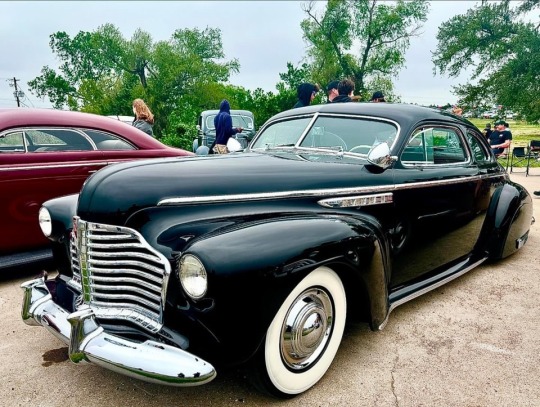


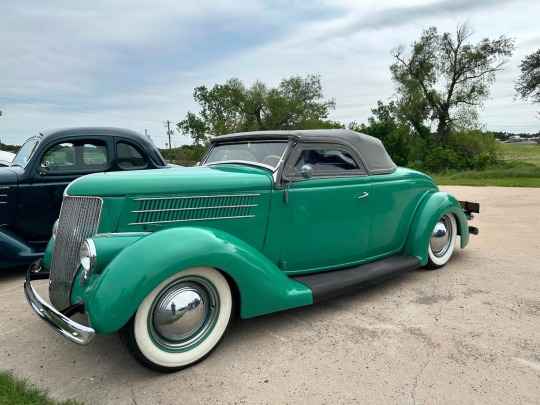
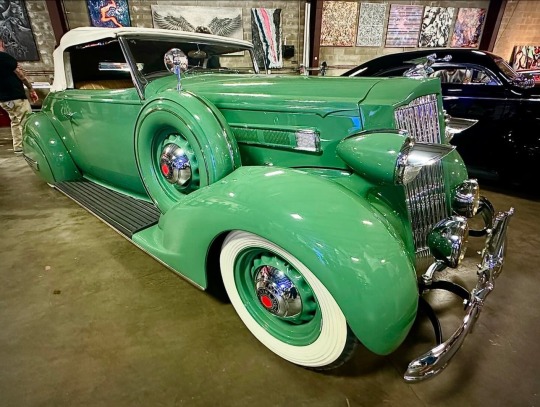
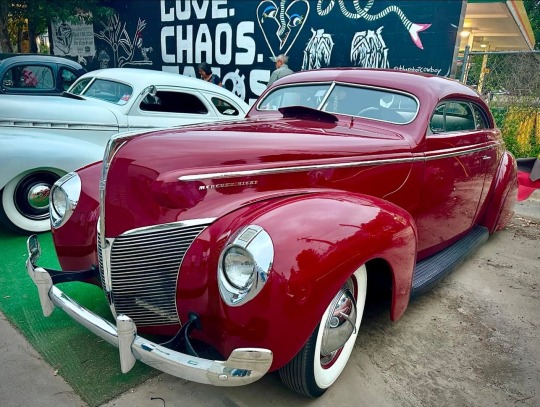
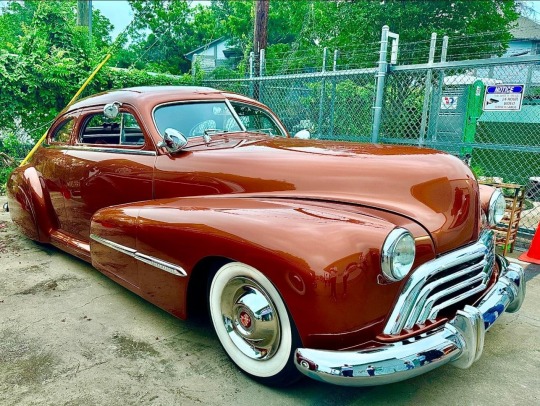
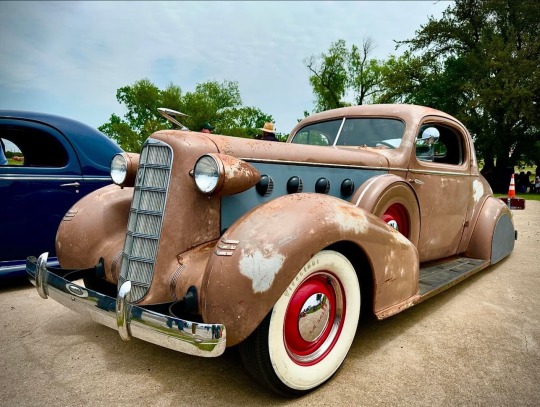
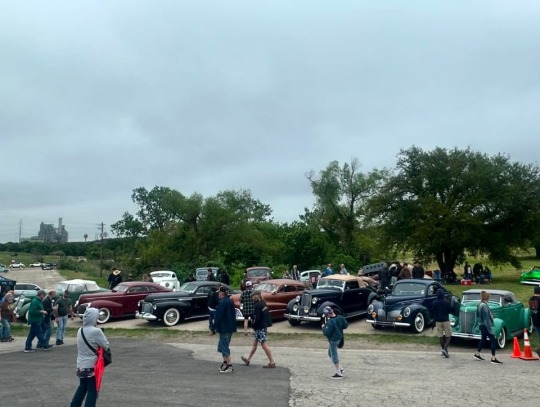
Los CoChinos representing at LSRU 2024. Texas Customs.
#custom cars#Texas customs#classic car#vintage cars#custom car#antique car#kustom#los cochinos#kustom kulture#praise the lowered#los cochinos cc#loscochinos#taildragger#39 zephyr coupe#39zephyr#39 mercury coupe#36 ford roadster#47 olds#41 buick#36 Packard roadster#35 la salle coupe#lonestarroundup#LSRU2024#1939lincolnzephyr#austin#austin texas#lincoln zephyr#1939lincolnzephyrcoupe#texas#lone star round up
21 notes
·
View notes
Text
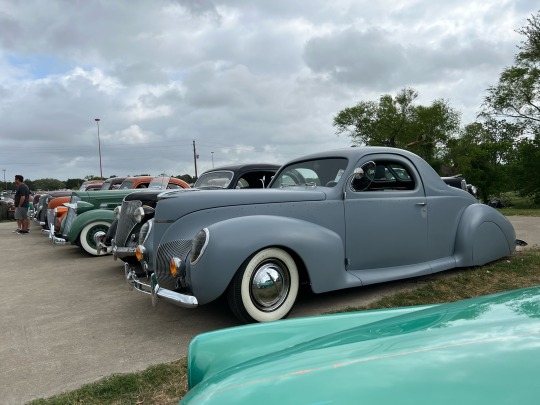
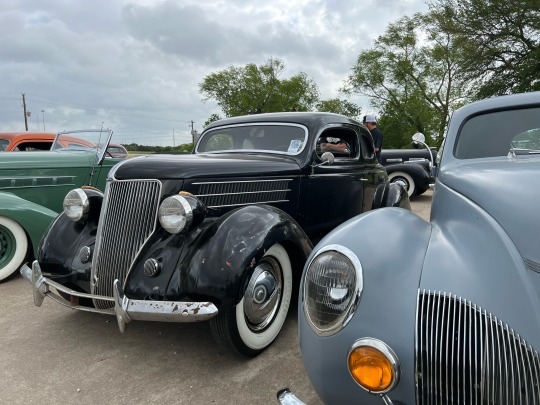




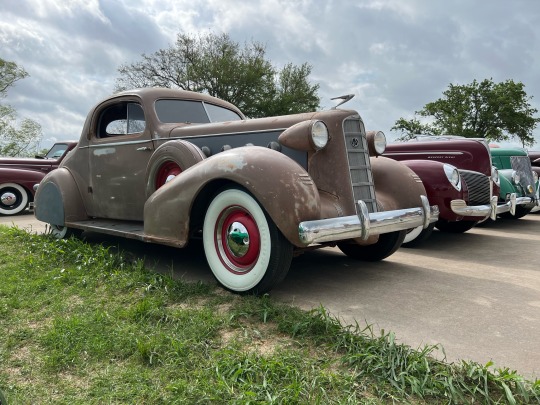

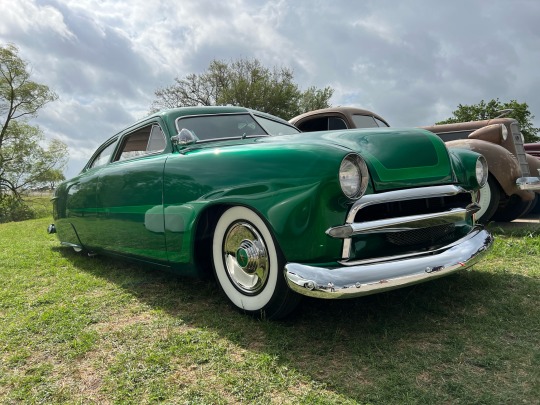

Los CoChinos LSRU 2022.
#los cochinos cc#loscochinos#lonestarroundup#2022#39 Zephyr Coupe#36 Ford 5 Window#36 Packard Roadster#40 Chevy Coupe#36 Olds Coupe#39 Mercury Coupe#36 Ford Roadster#35 La Salle Coupe#classic car#vintage cars#antique car#custom car#kustom#taildragger#praise the lowered#kustom kulture#prewar cars#austin texas#39 La Salle Coupe
104 notes
·
View notes
Text
Hot August Nights 2017: Painless Performance/STREET RODDER Top 100
Ten vehicles out of 6,000. That’s what we’re looking for when we come to Hot August Nights in Reno. In addition to general event coverage, STREET RODDER comes to this huge event every year in search of ten cars or trucks to pick as award winners in the Painless Performance/STREET RODDER Top 100 program. While our fellow staffers were choosing Top 100 winners at the Tri-Five Nationals in Bowling Green, Kentucky, we were doing the same in Reno. Those guys had every variety of ’55-’57 Chevy to choose from, but for us at Hot August Nights, the range was a bit broader. We try for a wide variety—in eras, manufacturers, and styles and well as by mixing some modest-budget homebuilt “real world” rides with some top-rung show cars.
There is no shortage of opportunity for winning prizes at Hot August Nights. The Top 100 prize package (a cool jacket, magazine and web coverage, and a little glory) isn’t near the big money prizes given out elsewhere at Hot August Nights, but we think a Top 100 award has a high value—and the winners agree.
The 2017 Painless Performance/STREET RODDER Top 100 season is now finished. One hundred vehicles have been honored and one of them will soon be announced as the 2017 Street Rod of the Year. Maybe it will be one of these winners from Hot August Nights. Which one would you pick?
1937 Chevy Pickup | Dale & Rozanne Buck | Mesa, AZ
Like most trucks, this one started out as a workhorse. Dale bought it from his father 49 years ago and used it to haul stuff, for transportations, dates, errands, and family trips. Look at it now, packed with a supercharged 383 stroker engine with dual carbs, riding on a modified MII front suspension and Chassisworks rear, covered in tangerine and cinnamon paint, and hauling in show trophies. The body and bed feature more than 25 modifications, including the one-piece hood and shaved sheetmetal. Mickey Thompson provided the wheels and tires. The cab is updated with bucket seats, Mooneyes gauges, modern audio, AC, and yards of brown leather.
1959 Cadillac | Larry Hanson | Gig Harbor, WA
What could be cooler than cruising the main drag of Reno, Nevada, in a mile-long ’59 Cadillac? Larry bought the car 17 years ago, from the son of the first owner who had passed away. It had been parked for 28 years under a carport. The rusted c was torn down for a frame-off rebuild and most of the sheetmetal was replaced. Bob Salstrom helped with much of the heavy lifting. Now the candy purple 63 Series Coupe DeVille looks and ride better than it ever did, powered by a beautifully dressed 454 engine with a 4L60 transmission. The interior combines modern elements like digital gauges and a contemporary steering wheel with classic two-tone tuck ‘n’ roll Naugahyde.
1936 Ford Club Cabriolet | Michael Mongiello | Eagle, ID
When’s the last time you saw a ’36 Club Cabrio, especially one as nice as this one. Only 4,616 were produced, and Michael believes there are only around 200 in existence today. This one was purchased from the original owners in Minnesota, and was street rodded with help from Griffin Rod & Customs, Danny Ingram, and others. The custom Dayton wheels were painted Tacoma Cream to contrast the Cloud Mist Grey (a 1940 Ford color). The lighter color is also used for pinstriping and on the beautiful valve covers and air cleaner cover on the Chevy 383 stroker engine. A Glide bench is covered in deep brown leather, along with the rest of the elegant interior.
1940 Ford Coupe | Ken Machado | Reno, NV
The reddest street rod parked at the Atlantis Resort was this homebuilt ’40 Deluxe coupe, driven all the way from Ken’s house, two miles away. For Ken, the coupe was inspired by the Flathead ’40 Ford coupe he drove when he was in high school (and drag raced in B/Gas). This time, Ken built his car strictly for the street (and shows), and with features not available in his teenage years, including a 480hp LS3 engine backed by a 4L65E trans, and a TCI suspension. Sheetmetal changes include the big-block firewall and low-key rear wheel tubs. Ken’s coupe won the Best Street Rod prize at the Atlantis in addition to STREET RODDER’s pick for Top 100.
1952 Ford Victoria Convertible | Jay & Dianne Skow | Quincy, CA
Jay and Dianne’s Vicky is a true old-school custom survivor. Jay’s parents bought it at a used car lot 60 years ago. It became his first car when he was 15 and he cut off the top when he was 16. After Jay’s 45th high school reunion, Dianne encouraged him to redo the car, which he still owned but had ignored for 42 years. The body-off rebuild was done with old-school components, such as the 1957 Thunderbird 312 Y-block with triple 94s. Fatman and RideTech components are out-of-sight suspension upgrades. The shaved, nosed, and decked body has ’58 Lincoln headlights, a ’55 Buick grille, and inverted ’56 Packard taillights. Now their grandchildren are wondering who will inherit it.
1965 Chevy Impala 2-Door Wagon | Richie Valles | Agua Dulce, CA
The concept behind the two-door wagon was to create something with the looks of a GM concept car, the style of a Sixties custom, and some lowrider flavor. He bought the car from a woman in her 80s in Hollywood. She and her girlfriends used to drive the car to Vegas to see Elvis perform at the Hilton back in the day. He redid the car at his shop, Unique Twist Auto Body in Burbank, converting the body to two doors, chopping the top, modified the front and rear, and added Buick Skylark wheels. The ’66 Impala seats were covered in suede. The 327 engine, in old time custom tradition, was left simple. Richie says he took a big chance painting it candy magenta, but people like it.
1933 Willys Roadster | Vaughn Veit | Buffalo, MN
Vaughn is something of a ’33 fan with a collection of every body style of ’33 Ford. This rare Willys is one of his non-Fords and probably the rarest. He told us there were only 71 Willys roadsters built that year, and less than a handful remain in the United States. The car was discovered in California and built from rusted parts at Roy Brizio Street Rods. The old time Ford Flathead has Navarro heads and intake, with a pair of Stromberg 97s on top. Underneath, the Art Morrison chassis modernizes the ride. The Sid Chavers interior blends traditional and contemporary. The painted wheels are one-offs built by Curtis Speed. Vaughn recently had the Willys in our photo studio. Look for a fully story soon.
1956 Chevy Nomad | John & Sheila Emacio | Chattaroy, WA
Three days after winning a STREET RODDER Top 100 award, this sleek white ’56 Nomad took Fifth Place in the prestigious Hot August Night Cup contest. In 2011, John and Sheila won Top 100 with a different ’56 Nomad. That one was silver and black with an LS6. This one runs a Jack Gibbs 409 with Inglese sidedraft injection and a Gearstar 4L80E. The car was built at G# Rod and sits on an Art Morrison chassis. The wheels are from Billet Specialties. Billet aluminum side trim is from Atomic Machine. Dark red leather was used throughout the interior. John describes it as a “finessed hot rod,” and says the white paint highlights the cars build quality.
1954 Hudson Metropolitan Convertible | Ted Whipple | Reno, NV
There are Hudson Metropolitans. Built by Austin, Metros were badged as Hudsons in 1954 when Hudson merged with Nash. Ted bought his from the original owner’s widow. It was bending from the rust, but builders Ken Carford and Ricky Ruiz helped Ted resurrect the car. MG Midget suspension parts support the stock frame. The 2.3L Ford engine was donated by an ’85 Mustang II, with a C4 transmission behind it. JBM wheels measure 14 inches. Interior touches include the vinyl and tweed covered bench, Stewart Warner gauges, and a Moto-Lita steering wheel. In the four years he’s owned the car, Ted has driven it a lot, shown it a lot, and answered a bunch of questions.
1950 Chevy Fleetline | Mitch & Pam McDonald | Foresthill, CA
In addition to selecting pro built rods for Top 100, we love finding “real world” owner-built street rods—the roots of this hobby—like this ’50 Fleetline. Mitch got into cars as a kid, standing next to his father and uncles. This was a two-owner car when he bought it from a friend five years ago, and began modifying it to his taste. Now it features a one-piece windshield, a filled hood, and a mild rake—with a dual-carbed 427 Chevy big-block for plenty of power, and a Heidt’s IFS frontend and four-bar rear. The beautiful interior includes SRT Challenger seats upholstered in black and tan leather. Five-spoke Americans measure 17- and 20-inches and wear Pirelli rubber.
The post Hot August Nights 2017: Painless Performance/STREET RODDER Top 100 appeared first on Hot Rod Network.
from Hot Rod Network http://www.hotrod.com/articles/hot-august-nights-2017-painless-performancestreet-rodder-top-100/
via IFTTT
0 notes
Text
Traditional Hot Rods—And Good Taste—Return to the 68th Grand National Roadster Show
“Dreadful,” “incoherent,” “baroque” … Detractors of “America’s Most Beautiful Roadster” (AMBR) competition were not exactly sparing venomous adjectives to describe the vehicles, which battled during the first decade of the century. Back then, judging revolved around the alterations performed on each entry, without much consideration for subjective criteria. It all changed in 2011, when judges were instructed to incorporate new guidelines, emphasizing the driving position, profile, proportions, rim/tire ratios, theme of the build, and more. Seen as controversial by some, this reform allowed smartly constructed and esthetically balanced entries (and not necessarily the most exotic or perfect) to stand a chance of winning the Grand National Roadster Show’s ultimate accolade. Here we are, seven years later with arguably one of the best selections of contestants to vie for the AMBR award. Tastefully done traditional/retro creations represent the bulk of the field; in fact, many would deserve being featured in Hot Rod Deluxe. We let you peruse through our pictures to discover a few of the nominees, as well as the ultimate champion, Bruce Wanta’s terrific ’36 Packard. His name will now grace the pedestal of the massive 9-plus-foot-tall AMBR trophy. Yet, the three-day event had much more to offer, thanks to the neatly organized seven halls, which welcomed no less than 50,000 visitors. One of our favorite spots remained the Suede Palace, solely dedicated to traditional hot rods and customs, with several vintage drag cars thrown in for good measure. When inaugurated in 2006, the old tin building gathered a handful of rat rods; but more than a decade later, they’ve disappeared, being replaced with nicely finished and painted vehicles built with taste and a deep appreciation for history. Concerts and an assortment of vendors/artists contributed to the “Palace’s” excellent vibe, too. Launched in 1950, the GNRS remains the “Oldest and Longest Running Indoor Car Show in the World.” Promoter John Buck and his crew have done a great job perpetuating the legacy of our hot rod forefathers—this extravaganza should be on every gearhead’s bucket list!
Ain’t no hot rod: Mixing Art Deco styling and custom car traits, Bruce Wanta’s ’36 Packard (with disappearing top) might not fit everybody’s definition of a hot rod. Yet, Troy Ladd and his crew at Hollywood Hot Rods managed to create an amazing coachbuilt, which wowed the crowd—and AMBR judges who declared it the 2017 winner. For motivation, Bruce selected a Lincoln V12 flathead hoped up with a Latham supercharger and Hogan heads.
Outta Muroc: Built by Stoker’s Hot Rod Factory, Bill Grant’s “Muroc Roadster” appeared to be right out of a Don Montgomery book. Bill’s roadster stood out in a sea of Deuces entered in the AMBR competition, as he based his project on a ’28 A equipped with a ’32 Model B engine, with an original Miller overhead conversion. The stock frame retains mega-detailed mechanical brakes.
’68 all over again: Inspired by the hot rods from the 1960s, Don Lindfors homebuilt his “Boss ’32” AMBR entry based on a ’32 Ford Roadster pickup shell made by Brookville, later painted by Pete Santini. Motivation comes courtesy of a Ford Boss 351 Cleveland V8, topped with four Weber 48IDA lookalikes—their bodies hide a modern fuel injection system.
Trick truck: The crew of Goolsby Customs (Alabama) brought a strong AMBR contender, this ’32 Ford roadster pickup dubbed “The Time Merchant.” We fell in love with its excellent proportions and metallic color. Owned by Matthew Gordon, the little truck runs a beautifully detailed Oldsmobile Rocket “88” with tri-carburetors.
Canadian contender: We counted at least half a dozen cars from Canada, with one of them competing for the AMBR award—Gord and Carolina Gray’s ’32 roadster. The British Columbian couple based their exercise on a Brookville body that sits on a Kiwi Konnection chassis, while H&H handled the flathead’s assembly. Low-mounted headlights and a tilted windshield contribute to the vehicle’s aggressive appearance.
FirePower Power: Dan Peterson commissioned Austin Speed Shop, Texas to build him the “Hill Country Flyer” in hopes of winning the AMBR honor. Fitted with a DuVall-style windshield and Rocket Racing rims, his ’32 roadster relies on a healthy, quad-carbed 392ci Chrysler Hemi.
Heavy metal: James Hetfield, lead vocalist of the band Metallica, owns several tasteful rods and customs. His latest endeavor involves “Blackjack,” a ’40s-styled ’32 Ford jalopy running a 296ci flathead V8 with desirable early speed equipment: Osiecki heads, Edelbrock hi-rise intake, Harman & Collins mag. The AMBR nominee also features a windshield chopped 1-3/4 inches, along with a Carson-style top.
Suede ’n’ paint: The fully detailed flathead mill fed by dual Strombergs equips Josh Candler’s ’35 Ford three-window coupe. Behind it sits Micah Hope’s ’55 Studebaker truck nicknamed “Lunatone,” dressed in metallic blue by Martin Kolor & Style. The round shapes of these Stud haulers lend themselves beautifully to a custom treatment, don’t they?
One of 50: Under the watchful eye of Alex “Axle” Idzardi since 2006, only about 50 cars are selected to be displayed in the Suede Palace—it has become quite an honor to be part of these happy few. Among them: Jeremy Jack of Napa in Northern California, who drove “Pinched Penny,” his heavily chopped ’55 Oldsmobile Rocket.
Best of Show: The Suede Palace has its own Best of Show, and this year’s mark of distinction went to Mike Thompson, a member of the Estranged Car Club based in Oregon. Barris Kustom Shop chopped his ’32 Ford three-window coupe in 1951, whilst Gaylord’s Kustom Tops handled the upholstery that same year. Two NHRA legends, Don Rackemann and Joe Pisano, owned it back in the late ’50s to early ’60s. The black paint has held well since its last respray in 1981.
Dry lake spirit: Rich Roberts has had a long history with hot rods, starting in high school with a Cadillac-powered ’29 Ford roadster—he lost his license for six months for racing too much. He has also been drag racing since the ’60s. Here is his latest project car, a dry lake–inspired ’32 Ford roadster complete with tonneau cover and a flathead V8 with four-carb induction. Rich won the Suede Palace’s “Best Hot Rod” trophy.
Electracutioner: That’s what Beatniks Koolsville Car Club member Roger Trawick calls his ’62 Buick Electra, which incidentally went home with the Suede Palace’s “Best Custom” award. The two-tone coupe, created by Dave Hitchinson at Von Hitch Customs, features simple alterations, including a body sans handles and a set of Astro Supreme wheels.
Whata find: “They are still out there,” as John and Don Coleman will confirm. The duo purchased their ’32 Ford five-window in September of last year—and it came with a cool story. The previous owner (then aged 16) purchased the coupe from a Fresno, California, used car lot in 1950. It was his first car and he drove it until 1967, when he parked it alongside a barn. He later moved it to a shed, where the Coleman’s found it.
Steele steel: Marcus Edell is the proud caretaker of this historic hot rod known as “The Fred Steele ’28 Ford Model A Tudor,” soon to be featured in Hot Rod Deluxe. Fred bought the vehicle in 1949, later chopping the top 6 inches and adapting a 283ci V8 purchased new from the local Chevrolet dealer in 1958. The paint dates to 1961.
Spiteful Canadian: Displayed with the Estranged Car Club, Brad Anderson’s “Spiteful Special” hails from British Columbia. The ’34 Ford five-window model moves quickly thanks to a flathead V8 with Made in Canada Ford heads, nicely polished. Dual Stromberg 97s handle the air and fuel supply.
Funny Buick: Recognized as The World’s only Buick-powered Buick Funny car, Bruce Bohen’s restored “Ingénue” made a lasting impression on the drag racing hobby back in the ’60s. It ran a best e.t. of 7.79 at 191 mph, fueled by an 8-71 supercharger-fed 430ci V8. Parked next to it: Sebastian Rey’s 331ci ’62 Studebaker Lark, soon to be unveiled in Hot Rod Deluxe.
The other ’32: Several racers used small Bantam bodies when building their AF/R dragsters. Among them, Boyd Penington’s “Smog Rat” fitted with a 354ci Chrysler Hemi, a record holder that covered the quarter-mile in 9.00 seconds at 170 mph circa 1962-1964. What you see here is a re-creation of Boyd’s ’32 model, courtesy of Ron and Shelly Penington, together with Lee and Alberta Denning.
Like a Rollin’ Stone: Raced all over the Southwest in the ’50s by Carl Stone from Dallas, Texas, the “Rollin’ Stone” ’32 Ford has been restored as it appeared in 1958, both in Hot Rod magazine and Rod & Custom. Under the hood lurks a ’57 Chevy 283ci hooked to a ’39 Ford transmission with Lincoln Zephyr gears. You can find out more about the roadster in our January 2014 issue.
Goin’ Like Heck: Larry Frees’ “Mr. Chevy” ’55 was one of the most talked about cars in Building 9, devoted to tri-Chevys. Van Heck (the original owner, builder, and driver) purchased the vehicle in 1964. Both the coupe and matching ’55 Chevrolet 4400 Series truck were wrecked in 1976 on the way home from a track. After sitting in storage untouched for years, they received an extensive restoration.
Tricky top: British Columbia is a hotbed of hot rodding activity, as exemplified by John Foxley’s ’32 three-window coupe called “Rad Rose.” The unique shape of the top, chopped 5.5 inches, comes from the combination of several Ford components: ’34 5W front roof section, ’33 two-door sedan rear roof section, ’34 four-door doors stretched 6 inches and ’34 windshield. Six 94s sit atop the 355ci ’70 GM block.
Five-week trash: Diana Branch’s colorful “Honey Dew” was assembled in just over a month with help from family (including husband Tom) and friends. Her cool A-V8 blends a ’29 Ford roadster body, ’32 frame, ’40 Ford flathead, ’39 Ford gearbox, and ’40 Ford rear end.
In memory of Pete: So-Cal Speed Shop’s Pete Chapouris passed away shortly before the GNRS, so it seemed appropriate to display two of his best-known hot Rods: “Limefire,” which graced the cover of Rod & Custom in December 1988, in addition to “The California Kid.” The latter appeared in the made-for-TV movie The California Kid, starring Martin Sheen. Jason Slover of Peculiar, Missouri, has been the owner of the ’34 coupe for years.
Shampoo delivery: Around 1952-1953, Joe Bailon crafted this Ford pickup for the owner of Betty Elizabeth Shampoo, hence it will always be remembered as the “Shampoo Truck.” It started life as a ’49 sedan, modified with a lift-off top and a windshield chopped 3 inches. Other alterations include a body sectioned 5 inches, reshaped wheel openings, and ’46 Olds bumpers. The Car Speed and Style cover star is now in the hands of Bob Dron.
Roth’s Ford: Remember the weathered ’56 Ford F-100 that adorned HRD’s latest cover (January 2017)? Here it is again in its new, freshly completed two-tone PPG livery. Dave Shuten and the team at Galpin Auto Sports did a spectacular job restoring Ed Roth’s former shop truck for collector Beau Boeckmann. Artists Robert Williams and Van Franco respectively handled the paint on the dash and tonneau cover.
Soaking up the sun: Besides the 500 vehicles displayed indoor, the GNRS offered a huge outside show as well. One of the nicest lineups involved this group of 1920s and 1930s entries, led by Louis Stands’ red 327ci ’27 Ford roadster. Next to it, check out Brett Miller’s ’31 Model A, as well as Matt Kimmel and Isaac Bowser’s channeled ’34 Ford coupe, equipped with a 331ci ’55 Cad V8.
Patina’d cousins: In the foreground, that’s Nathan Sutton’s ’32 Fordor, a partially resprayed family hauler, which still features a lot of its ancient paint. To the left, the rare European ’32 Tudor owned by Stephan Szantai—it still wears most of its original paint, plus lettering applied before 1955. Both rides were displayed in the Suede Palace, respectively in 2015 and 2016, though Nathan and Stephan elected to display them during Saturday’s Drive-In event this year.
The post Traditional Hot Rods—And Good Taste—Return to the 68th Grand National Roadster Show appeared first on Hot Rod Network.
from Hot Rod Network http://www.hotrod.com/articles/traditional-hot-rods-good-taste-return-68th-grand-national-roadster-show/
via IFTTT
1 note
·
View note
Text
Painless Performance/STREET RODDER Top 100 Winners From Grand National Roadster Show
We had a blast picking our Painless Performance/STREET RODDER Top 100 award winners at the 68th annual O’Reilly Auto Parts Grand National Roadster Show presented by Meguiar’s Premium Car Care Products. Seven buildings of the Pomona Fairplex were packed with some of the greatest hot rods, customs, street cruisers, lowriders, classic trucks, and race cars in the country. Our selection includes one of the contenders for America’s Most Beautiful Roadster, another from the Suede Palace, one car that was originally built a participant at this show in 1954 and others that have were barely finished in time to make the the 2017 show.
Enjoy our selection and look for us soon at the Sacramento Autorama and the Detroit Autorama where we will continue to pick winners in the Painless Performance/STREET RODDER Top 100 program.
1938 LaSalle Convertible Coupe | Brando & Erin Massei | Huntington Beach, CA
When Brando got the car, it hadn’t been running for 20 years. His goal was to transform it into a one of a kind custom that he could drive anywhere. Customizer Keith Dean at South End Kustom came on board to build the car, now chopped, channeled, and sectioned, and rolling on an ’84 Olds chassis. Garnet Red with candy apple paint and Marana pearl with varigated gold leaf covers the convertible. Powering the car is a carbureted Chevy small-block tied to a 200-4R transmission, Keith Dean designed the interior and Joel’s Upholstery covered the buckets in brocade fabric. Brando named the LaSalle Lana, in honor of the actress Lana Turner.
1937 Ford Coupe | Dan Wathor | Rio Linda, CA
This bronze ’36 Ford coupe with cream colored one-off billet wheels made a big impression at the 2016 Detroit Autorama. Dan Wathor and builder Kenny Welch from Kenny’s Rod Shop started with rough raw material and finished with a Ridler award contender. A custom chrome- tubular frame forms the foundation, with modified Heidt’s and RideTech suspension parts. The body is finished with PPG paint and a single front to rear pinstripe. The engine is a Ford 351 Windsor stroked to 427 cubic inches, with Arias Hemi heads, and Holley EFI with a four-port Hilborn look. The interior is finished in toffee brown leather. The original gauge cluster was updated with Auto Meter workings.
1932 Ford Three-Window Coupe | Buck Boze | Denver, CO
This Deuce coupe has been a street rod since the Eighties. When Buck got the car, he teamed up with Tom Stark at Precision Designs to have it transformed into a well-performing and elegant rod. Body mods include a filled roof, front horn covers, custom splash and much more, all covered in custom-mix green paint. A custom intake feeds the LS3 engine,backed by a 4L65E and a Ford 9-inch rear. Sid Chavers handled the interior, which features a Glide bench and Classic Instruments gauges.Underneath, the front dropped axle and rear tranverse springs and Pete & Jake’s ladder bars add tradition suspension style. Custom wheels roll on 205 and 245 Diamondback tires.
1928 Ford Roadster | Bill Grant | Upland, CA
The ’28 Model A highboy roadster from Stoker’s Hot Rod Factory was an AMBR contender, but has a heritage like many of the hot rods found in the Suede Palace, and the personality of a rods seen in the earliest issues of Hot Rod Magazine. The stock Model A rolling chassis was left over from a previous build. Most of the rest of the car, with the exception of the Brookville body, was built from already-owned parts. The ’35 Ford wire wheels are 16-inchers, with Firestone piecrust skinny tires. The seats and panels are upholstered in two-tone leather and cloth. Our favorite part of the car was the 1932 B 4-banger engine, topped with a Zephyr two-barrel carb, built in 1947 and never fired.
1949 Ford Custom Truck | Bob Dron | Isleton, CA
It was exciting to see the restored “Betty Elizabeth Shampoo Truck,” originally built by Joe Bailon 65 years ago and displayed at the Oakland Roadster Show in 1954. It had been is storage for 28 years and was in bad shape when Dron found it. Jeff Nickell at Nickell’s Customs salvaged the worn sheetmetal, Ron Mangus built the beautiful interior, and Kandy Man Ramirez sprayed fresh paint. The hardtop convertible truck has been chopped, channeled, and sectioned—and runs a ’57 Cadillac engine. The stock 15-inch wheels and Diamondback whitewall tires look just the way Bailon built it. The new chassis was built for modern driving, which is what Dron has planned for this survivor.
1940 Ford Sedan | Mike & Marcia McAuliffe | Moraga, CA
Mike and Marcia bought the car four years ago and drove it for a couple years before making the move to have it completely rebuilt by Brandon Flaner and his team at East Bay Speed & Custom. That’s when it went from black with a mohair interior and mild Flattie to ’50 Merc Everglade Green with a two-tone tuck ‘n’ roll interior and a French Flathead with Navarro heads and triple Stromberg 97s on a Cyclone intake. Wide whites are paired with 16-inch ’40 ford wheels with flipper hubcaps. Custom mods include the Crestliner steering wheel and ’46 truck gauges on the inside, and reshaped sheetmetal, modified hood trim, ’40 Merc bumpers, and ’41 Studebaker taillights on the outside.
1958 Packard Custom | John D’Agostino | Discovery Bay, CA
D’Agostino’s newest in a long line of show customs is “Rita.” This radically redone 1958 Packard is named after Hollywood icon Rita Hayworth, who would be flattered. D’Agostino calls his chopped windowless two-seater a Kustom Sportster and worked with Oz Welch at Oz Kustoms to turn the concept into reality. Additional mods include an extended hood and body panels, chrome bullet grille,’55 Olds headlights, and ’56 Packard tailligjhts. Modified T-Bird wire wheels wear bullet center caps from Coker. The paint is an infinite number of shades of candy and pearl lavender. The rebuilt ’62 Cadillac are covered with lavender pearl diamond tuck ‘n’ roll and white pearl.
1928 Ford Roadster | Thom Van Pelt | Piedmont, SD
The Model A was found in a scrap pile by Van Pelt’s son, Tim, back in 1990. The build eventually began with the goal of creating a Fifties era open air time machine, and progressed on a pay as you go basis, with work split between the Van Pelts, Kell Kustom, and Badlands Trading Company.The stock body sits on a pinched ’32 frame. The 1946 59AB Flathead engine is fed by Stromberg 97s atop an Offenhauser intake manifold, with a ’39 Toploader trans and Culver City Halibrand rearend to back it up. Every component was selected with nostalgia in mind, from the ‘40n Deluxe steering wheel to the ’35 Ford wire wheels with bias-ply Firestones. The roadster was displayed in the Suede Palace.
1932 Ford Five-Window Coupe | Pat Thomas | Boise, ID
Like many of our Top 100 picks, this Deuce coupe sat ignored for decades, in this case from 1963 to 2012. It was almost restored to original at one time under a previous owner, but Thomas wanted a rod and turned over the project to Kenny’s Rod Shop. The result is a chopped and smoothed body with a filled top, and bobbed rear fenders, riding on a TCI chassis. A Roush Ford 427 engine with 8-stack injection is tied to an AOD trans with a Ford 9-inch at the rear. A deep brown leather interior complements the jet black paint, and 17- and 18-inch Billet Specialties wheels with Michelin rubber fill the fenders. Pat has contacted the original owner, who can’t wait to take a ride.
1940 Ford Coupe | Gregg and Linda Lowry | Fallbrook, CA
As the owner of Jalopy Shoppe in Escondido, California, Lowry has built a bunch of top shelf rods. This time, his customer was his wife Linda, who had always wanted a ’40. The car was a 5-window shell on a stock frame when it was purchaseed in 2001. Work began in 2005 and was finished in 2016. T.J. Gillispie and Gillispie Garage performed much of the bodywork, including a 3-inch chop, lengthened ’39 Ford sedan doors, sectioned and narrowed hood, and more. It sits on a beefed-up stock frame with Kugel front and rear suspension, and power from a 4.6L Ford. Ron Mangus supplied the upholstery and Intro provided 19- and 20-inch wheels. Linda calls it classically elegant.
The post Painless Performance/STREET RODDER Top 100 Winners From Grand National Roadster Show appeared first on Hot Rod Network.
from Hot Rod Network http://www.hotrod.com/articles/painless-performancestreet-rodder-top-100-winners-grand-national-roadster-show/
via IFTTT
0 notes